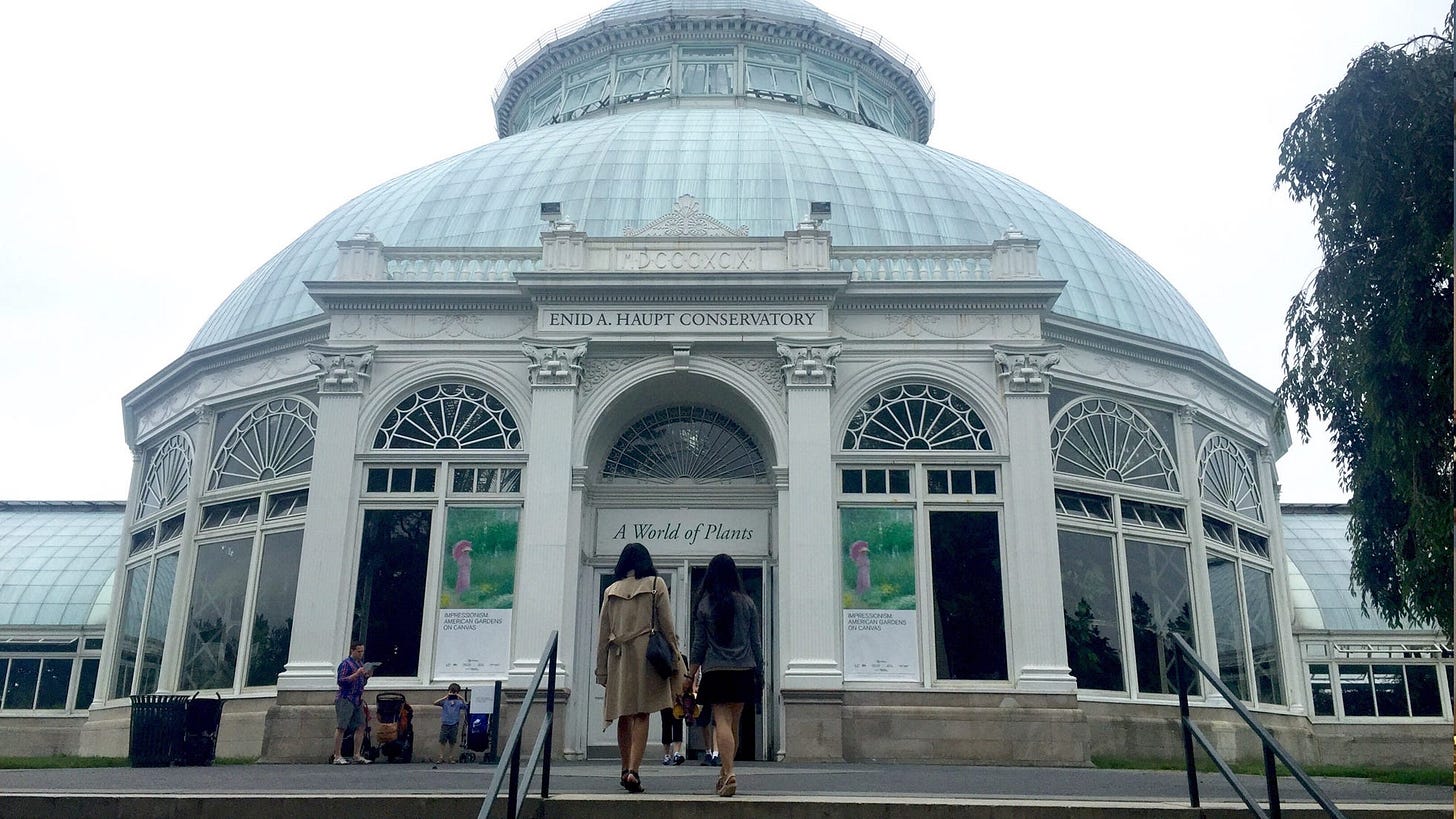The Cost of Care
I do not believe in destiny, fate, or reincarnation. Still, some things I know to be true.
I do not believe in destiny, fate, or reincarnation.
Still, these are some things I know to be true:
Care. I never thought I'd miss the unforgiving precision of Mrs. Wohlgemuth’s red pen—until I realized I may never find someone who cares enough about my critical thinking to tear my work apart like that again.
Connection. There is no metaphor for how this feels: to lay so close until the bridges of our noses press together, until our eyes blur into a smudge of irises and lashes, and our senses are consumed by just one another.
Growth. Elisabeth and I met too late in life to have grown up together, but she’s seen me grow through more seasons than anyone else I know.
Grief. Some moments are so beautiful they cannot be threaded into words. My heart aches for those moments we shared—and the ones we never got to.
Care, connection, growth, grief.
These are also some things automation has yet to touch.
As economic theory, Baumol’s cost curve explains why the cost of services like healthcare, childcare, and education continue to rise despite little increase in productivity. These fields are labor-intensive and human effort isn’t easily scaled. Besides, who wants a robot teacher or AI nanny? Unlike manufacturing, where automation and AI have driven massive efficiency gains, teaching a class or tending to a patient still requires the same amount of care and attention as it did 100 years ago.

Some observations:
Things that are easy to automate get cheaper over time. Conversely, things that are resistant to automation become more expensive over time.
Services don’t experience same rate of productivity gains. They are less easily automated or scaled up by technology, machines, and capital.
Rising cost is not fate (inevitability), but how good or bad we are at automating the goods and services in that field.1
What happens when AI enters these sectors?
I recently landed in the ER, which started with a goal of setting a Strava PR and ended with learning that Code Delta stands for “life-threatening emergency” not “Dog”—which apparently I quipped while hooked up to laughing gas en route to the hospital.
I remember none of it.
The first few moments regaining consciousness felt just like they show in the movies: pitch black—machines beeping—blink awake—blur—blink again—fluorescent lights—too bright!—squint—struggle—then the room comes into focus. Nothing could’ve felt more reassuring than seeing my mum’s concerned face as she held my hand and listened to me groan while nurses tended to my bedside and explained what happened.
Who wants a robot teacher or AI nanny?
In healthcare, a steady drumbeat of research from the last two decades suggests that care fosters trust and reduces stress, resulting in faster recovery. From “Effectiveness of empathy in general practice” in the British Journal of General Practice (2013):
There is a good correlation between physician empathy and patient satisfaction and a direct positive relationship with strengthening patient enablement. Empathy lowers patients’ anxiety and distress and delivers significantly better clinical outcomes.
I’m excited for AI to augment humans in care-intensive sectors: diagnosing conditions, predicting patient outcomes, personalizing treatment plans in medicine; adaptive learning, real-time feedback, customized tutoring in teaching. But I disbelieve machines will replace humans in these jobs.
AI will raise the floor for everyone by making services more accurate, affordable, and accessible, but it won’t lift the ceiling because that’s where human aspects of caregiving and healing shine through. Empathy, creativity, and connection stubbornly resist automation, yet they are precisely the aspects of work people find most dignity in.
Prediction: As AI takes over more routine or repetitive tasks, the work that remains—deeply human, emotionally complex—will become even more valuable.
This is also my hope for education, vis-à-vis Bloom’s two sigma problem:
Bloom's 2 sigma problem refers to the educational phenomenon that the average student tutored one-to-one using mastery learning techniques performed two standard deviations better than students educated in a classroom environment.
In other words, the average student can achieve 95th-percentile performance with 1:1 instruction. Or as the erudite
put it: Learning is the result of friction.
While technology is frictionless, software is scalable, LLMs are free to use, and Professor Claude/GPT/Perplexity is always ready to engage, learning doesn’t happen at the push of a button. It happens when we know there is someone who:
Cares about us as a person
Makes it easy to understand what they are teaching
We trust
Is energetic and excited to teach
Pushes us to be our best
Goes above and beyond to help us
Teaches us new ideas or ways of seeing and understanding
In Gallup’s Voices of Gen Z Study, these are the top 7 responses to the question: “Think about the the best teacher you ever had. What made them the best teacher?”
I’m at an age when friends are starting families, taking time off for family, or deliberating whether or not they want to start a family. For men and women alike in my cohort, this future poses a peculiar dilemma: Is taking time off for family a retreat from the dignity that work confers? Or is it a profound assertion of a different kind of dignity—rooted in care, connection, and meaning?
Is taking time off for family a retreat from the dignity of work?
The sectors most affected by Baumol’s cost curve—healthcare, education, caregiving—are disproportionately staffed by women. Baumol’s cost curve, then, is not mere economic theory; it is a reflection of how we value different kinds of work.
It forces us to ask: Why do we value the labor of those who write software or sell pharmaceuticals over those who educate our children or care for the sick? How do we reconcile the rising cost of care with the need to maintain their quality and accessibility? Can unconditional value exist in the age of AGI?
As AI reshapes the landscape of labor, our challenge is to safeguard the dignity of work, particularly in fields where human craft and connection matters most.
In the workforce my children enter, I hope the value of their work will not be measured by how much they produce, but by how they touch the lives of others. In this new world, perhaps dignity is not something conferred by society, but something they claim for themselves—through their choices, their communities, their commitments, and the contributions they make, seen and unseen.
On our third date, S. and I walked through the San Francisco fog. I used to laugh at the way he looked at me; I’d squirm under the spotlight, a bug under a microscope, a bright light I was not used to. I’d turn away and hide through a curtain of hair. You make me nervous, I’d think. You’re lovely, he’d say, and I’d blush or look down.
Later, I’d learn to push back the protective shades and smile. I’d learn to see the light as a sun, a star. I’d stare right back. We fit comfortably into each other, letting our fears fall through the cracks. For the first time, an open field with nowhere to hide didn’t seem so frightening anymore. The tickling of leaves felt warm.
We marveled at each other’s existence, how the strings of our lives had found their way together. In twisting corridors and lamplit streets we curled together, sweetness staining our tongues. On more than one occasion, my hands would find their way to his pockets. Once, I joked about Daria’s Handwarming Services™.
“You’ve got a customer,” he quipped right back.
“But how would that scale?” I mused aloud.
"Maybe some things don't need to scale. Some things are meant to stay special."
Some things are meant to stay special.
This I know to be true.
Lowering the cost of care means turning services into goods that can be sold (productized) and scaled up (productionized). Here’s a16z on what this might look like in healthcare.







